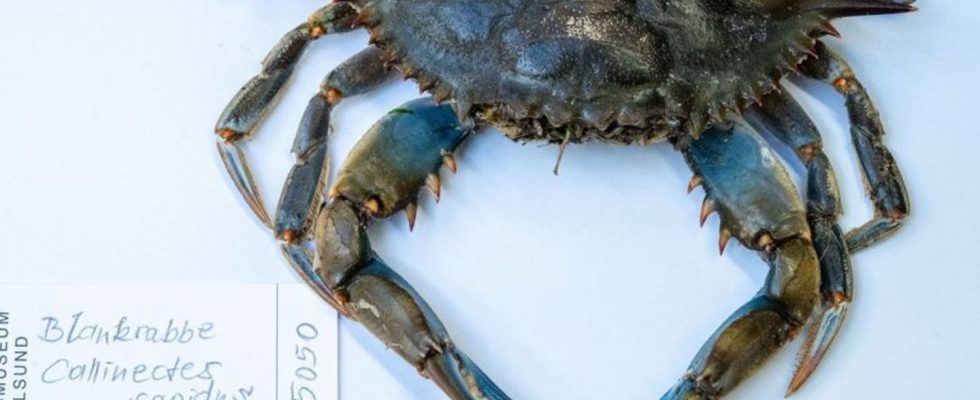Animals
First blue crab in the southern Baltic Sea a “sensational find”
View of a blue crab in the collection of the German Maritime Museum, which was found on the beach in the Baltic Sea resort of Ahlbeck in April 2023. photo
© Stefan Sauer/dpa
The find of a walker on Usedom looks very different from local crabs. According to the expert, the blue crab is the first of its kind in the southern Baltic Sea: a “sensational find”.
A previously unknown crab species has appeared on the coast of Mecklenburg-Western Pomerania. It is a blue crab “which has never been found here before,” said Ines Martin from the German Maritime Museum in Stralsund of the German Press Agency. “It’s really a sensation.” The find on Usedom is the first evidence of the crab on the southern coast of the Baltic Sea. The species actually comes from the American east coast.
Compared to native crabs, the animal is unusually large at more than 20 centimeters wide. According to Martin, the crab is generally very interesting for fisheries. “The muscle meat in the limbs in particular is considered a delicacy,” said the biologist.
Never found so far east
The specimen was found dead 200 meters from the pier in Ahlbeck by a walker on the beach, who immediately recognized that this was a special crab. This became clear, among other things, because of the conspicuous blue coloration. The man informed the Maritime Museum and Martin as curator for crabs. “I was able to confirm very quickly that it was a sensational find.” So far there is little evidence for the North Sea, but no evidence so far east.
Around 1900 there was a first record of this species in Europe on the French Atlantic coast and in 1964 the first find in the North Sea near Cuxhaven. “Only two individual records for the Baltic Sea have been mentioned in the literature so far: 1951 near Copenhagen and 2007 further north in Skagen, between the Kattegat and Skagerak. To date, no finds have been reported for the inner Baltic Sea.”
Itinerary unclear
According to the Maritime Museum, how the crab got here can only be guessed at. Again and again animals got lost and also got into the Baltic Sea favored by certain currents.
For Annerose Goldbecher, taxidermist at the Maritime Museum, it is a lucky find. As part of the modernization of the Maritime Museum, she recently prepared an older specimen of a blue crab from the collection for the exhibition. However, the color was missing due to the preservation, which is why she had to recolor the shell. “I mostly look for the illustrations on the Internet.” In the best case, like now, an original is available as a template.
The blue crab found is in turn preserved in an alcohol solution and is part of the biological collection of the German Maritime Museum. According to the museum, the crustacean collection already includes more than 5,500 objects, including a specimen of a giant Japanese crab.

